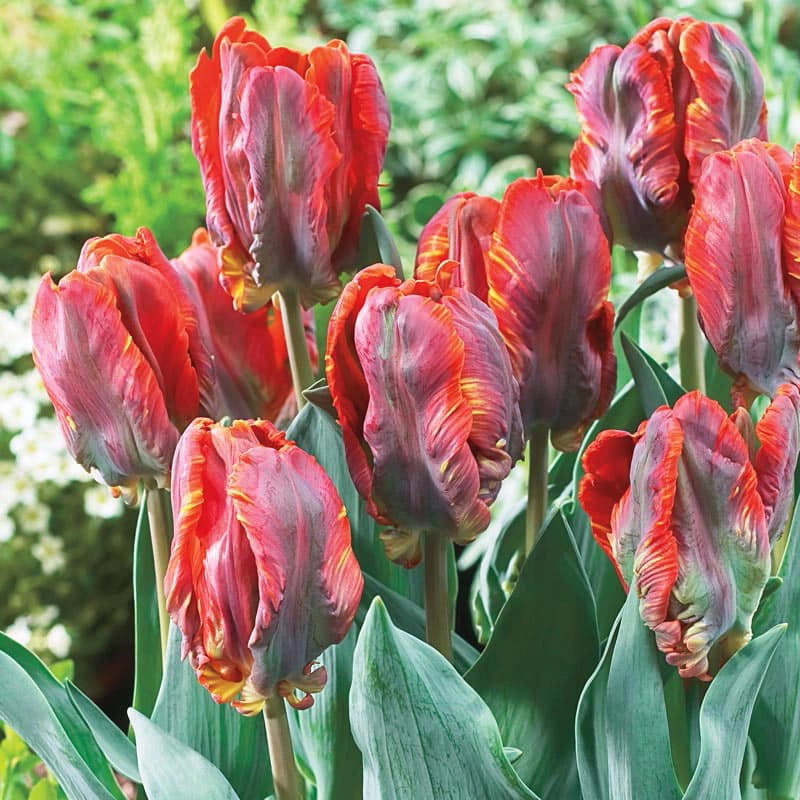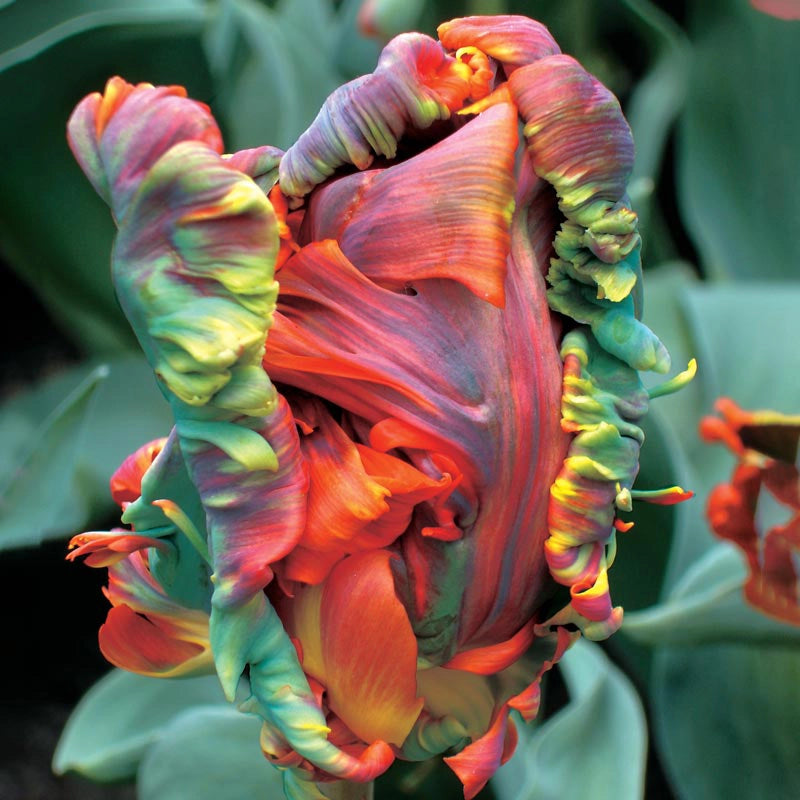1
/
of
4
Blumex Parrot Tulip
Unique blooms with color for days!
80542
- Regular price
-
5 for
$6.99 - Regular price
-
$6.99 - Sale price
-
5 for
$6.99
Couldn't load pickup availability
- flowering dateMid-late spring.
- hardiness zone3-8
- height20 - 22 inches
- restricted statesAE AK GU HI PR
- ship as11-12 CM
- sun exposureFull Sun, Partial Shade
- Easily draws attention in the border or vase
- Every Blumex Parrot Tulip bloom is one-of-a-kind
- Flowers later than the typical tulip
Uniquely shaped and exotically streaked, parrot tulips are endlessly fascinating. Vibrant colors and strong growth make these blumex parrot tulip bulbs covetable from coast to coast. The distinctive Blumex parrot tulip can feature red, orange, pink, purple, yellow, green... even a faint blush of blue over the ruffled petals. And no two Blumex parrot tulips blooms are alike. These parrot tulips grow 20-22" and usually flower later than other tulips, expect a colorful grand finale to your tulip bloom season. We suggest planting these parrot tulip bulbs in a spot in your garden where your audience can admire them up close. Tulipa 'Blumex'
Product Details
- botanical nameTulipa 'Blumex
- flowering dateMid-late spring.
- flower colorOrange
- flower formRuffled shaded flower
- foliage typeLong sword like green
- formBulb
- growth rateFast
- hardiness zone3-8
- height20 - 22 inches
- planting instructionsPlant 6" deep.
- pruningOnly dead heading. It is important to let the foliage mature and die down naturally, do not cut back. Next year's bloom is being developed.
- restricted statesAE AK GU HI PR
- shipping seasonFall
- ship as11-12 CM
- soil requirementWell drained
- spacing4 - 6 inches
- spread4 - 6 inches
- sun exposureFull Sun, Partial Shade
- winter careNo water care needed.
Shipping Schedule
When will my order ship?
Plants will be shipped at the proper planting time for your area of the country during the shipping timeframes outlined below:
| 2023 Fall Shipping Schedule | |
|---|---|
| Zone | Most Dormant Bareroot & Potted Perennials, and Shrubs |
| 3A-4B | 9/4/23 - 10/27/23 |
| 5A | 9/4/23 - 10/27/23 |
| 5B | 9/4/23 - 10/27/23 |
| 6A & 6B | 9/4/23 - 10/27/23 |
| 7A | 9/25/23 - 11/10/23 |
| 7B | 9/25/23 - 11/10/23 |
| 8A & 8B | 9/25/23 - 11/10/23 |
| 9A-9B | 9/25/23 - 11/10/23 |
| 10A-10B | 9/25/23 - 11/10/23 |
| Last Order Date | Zones 3A - 6B: 10/23/23 Zones 7A - 10B: 11/6/23 |





Blumex Parrot Tulip
- Regular price
-
5 for
$6.99 - Regular price
-
$6.99 - Sale price
-
5 for
$6.99
Product Reviews
Questions & Answers
Planting Videos
Planting Videos
Hardy Bulbs Tulip
 Hardy Bulbs Tulip - Unboxing/Planting Delayed
Hardy Bulbs Tulip - Unboxing/Planting Delayed
 Hardy Bulbs Tulip - Site Prep
Hardy Bulbs Tulip - Site Prep
 Hardy Bulbs Tulip - Planting
Hardy Bulbs Tulip - Planting





